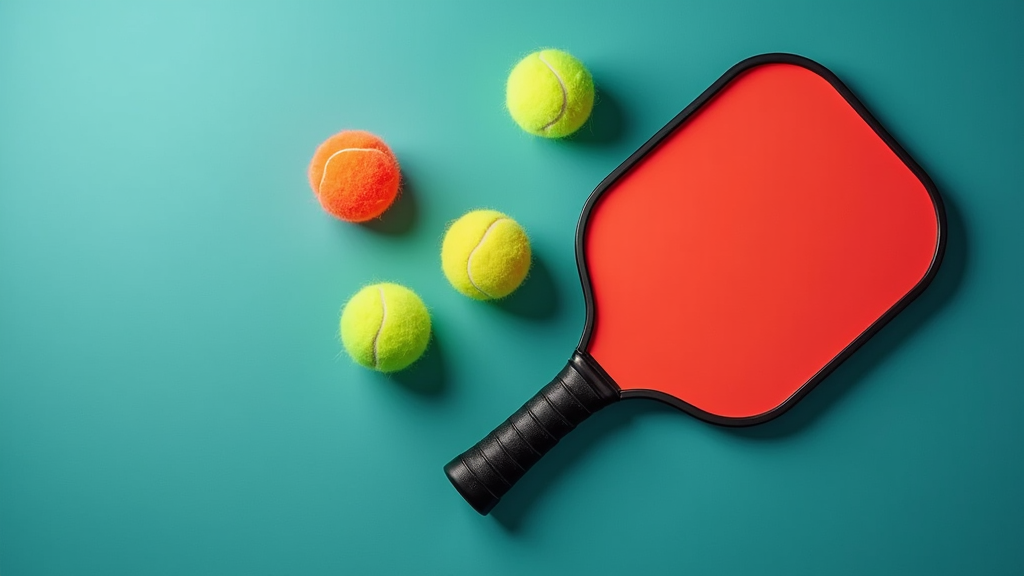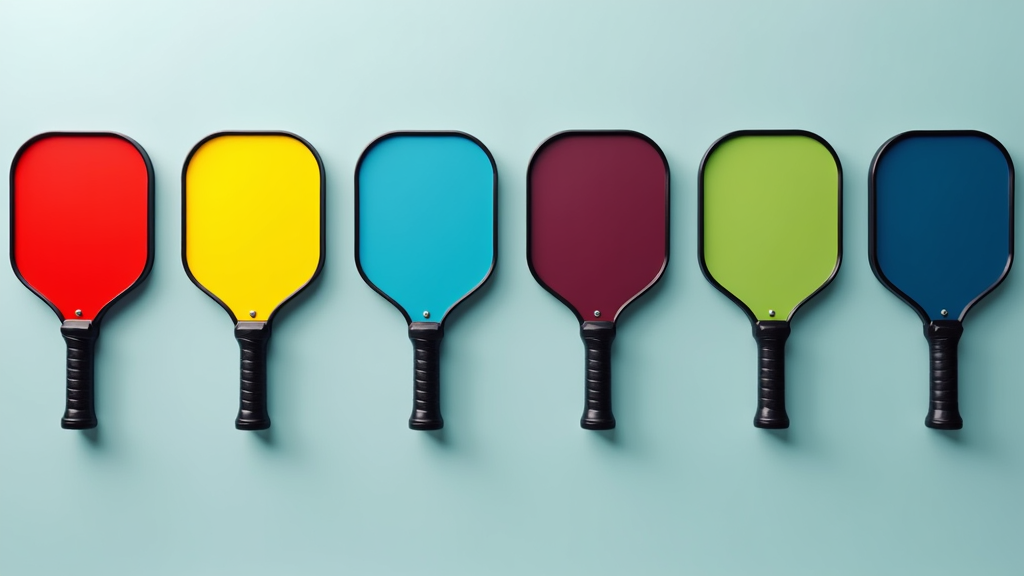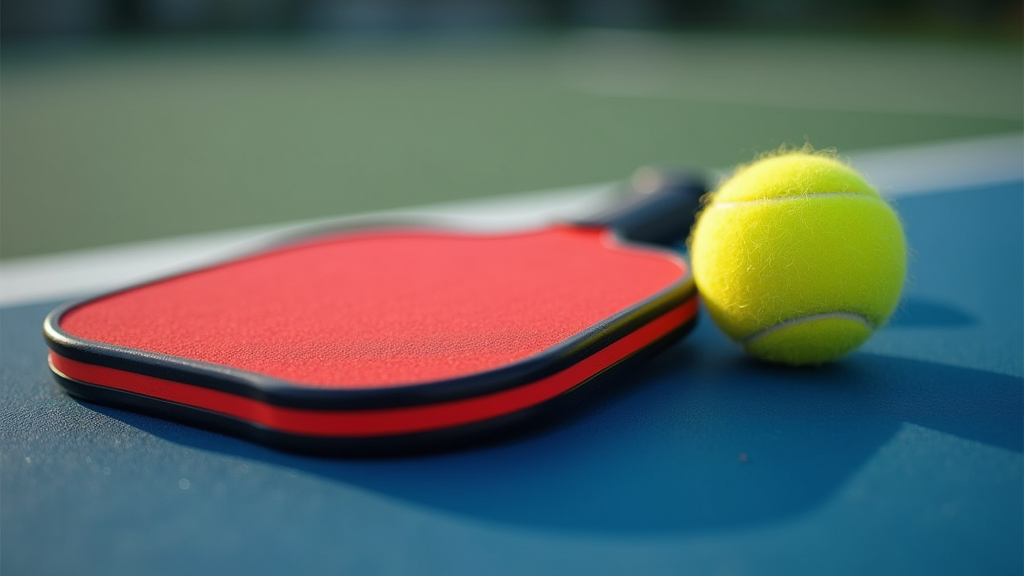Table of Contents
- Understanding the Pickleball Paddle Core Materials Outline
- Understanding Pickleball Paddle Core Materials Outline
- Detailed Guide to Pickleball Paddle Core Materials Outline
- Selecting the Right Core: Pickleball Paddle Materials Outline
- Pickleball Paddle Core Materials Outline: Key Takeaways
- Choosing the Right Pickleball Paddle Core Materials Outline
Understanding the Pickleball Paddle Core Materials Outline
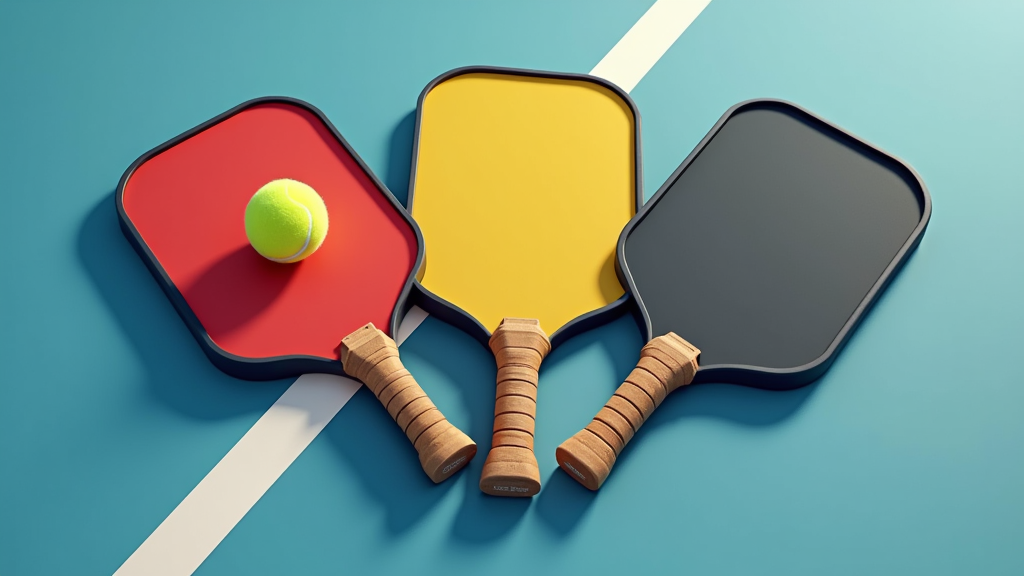
Pickleball Paddle Core Materials: Overview and Performance Impact
Pickleball paddle core materials play a crucial role in determining a paddle’s overall performance. The core significantly affects factors like power, control, and feel. Polymer cores are currently the most prevalent, offering a good balance of these attributes. Nomex cores are renowned for generating power, while aluminum cores excel in providing enhanced control.
Selecting the appropriate core material is essential for optimizing your gameplay. Making the right choice can lead to improved shot accuracy, increased power, and an overall better experience on the court.
Evolution of Pickleball Paddle Core Materials
The evolution of pickleball paddles has come a long way from the simple wooden designs of the past. Early paddles lacked the sophisticated performance characteristics of modern paddles. The introduction of advanced core materials marked a significant turning point, enabling manufacturers to fine-tune paddle performance for different playing styles.
Recent advancements include the development of hybrid cores, which combine different materials to leverage their individual strengths. Additionally, advanced polymer blends are constantly being developed to enhance specific performance aspects, such as durability and responsiveness.
Learning Objectives: Core Materials and Paddle Selection
This outline will provide a comprehensive understanding of the core concepts related to pickleball paddle materials. You’ll learn about the distinct properties of polymer, Nomex, and aluminum cores, including their advantages and disadvantages.
Furthermore, you’ll gain practical knowledge on how to select the optimal core material based on your unique playing style and skill level. This will enable you to make informed decisions when choosing a paddle, ultimately improving your performance and enjoyment of the game.
Understanding Pickleball Paddle Core Materials Outline
Fundamental Concepts in Paddle Core Materials
The core of a pickleball paddle is the internal material that gives the paddle its feel, power, and control. Understanding the core is crucial for choosing the right paddle for your playing style.
- Core:The inner material of the paddle, impacting feel and performance.
- Honeycomb Structure:A common design for cores, enhancing strength without adding weight.
The core material directly influences the paddle’s power, control, noise level, and overall durability. Different materials and designs cater to various player preferences and skill levels.
Essential Components of a Pickleball Paddle Core
A pickleball paddle core typically features a honeycomb structure to maximize strength while minimizing weight. The core material itself is the defining element, but several other factors contribute to its performance.
- Required elements: Core material, honeycomb structure (typically).
Key features to consider when evaluating a pickleball paddle core include:
- Material Type:Polymer, Nomex, Aluminum, or Hybrid.
- Density:Affects power and control; higher density generally means more power.
- Cell Size:Impacts feel and durability; smaller cells can offer enhanced durability.
Secondary aspects that influence paddle performance:
- Weight:Lighter cores allow for faster swing speeds and quicker reactions.
- Noise Level:Some core materials naturally produce more noise than others when striking the ball.
- Durability:How long the core will maintain its performance and structural integrity under regular use.
Important variations in core materials:
- Polymer:Cell size variations (larger for control, smaller for power).
- Nomex:Resin-dipped variations for added strength and stiffness.
- Hybrid:Combinations of different materials for tailored performance characteristics.
Detailed Guide to Pickleball Paddle Core Materials Outline
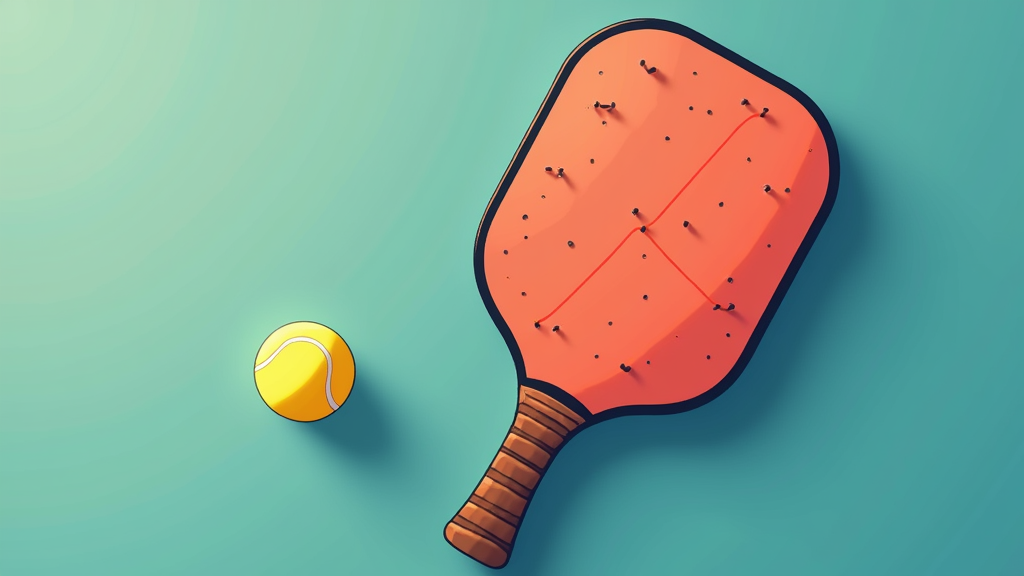
Understanding Polymer/Polypropylene Pickleball Paddle Core Materials
Polymer, often called “Poly” or “Polypropylene,” is a widely used pickleball paddle core material. It is made from a soft, flexible plastic blend and features a honeycomb cell structure.
- Pros:Polymer cores offer a soft touch and maximum control, quiet performance, durability, flexibility, lightweight design, and cost-effectiveness.
- Cons:Smaller cells provide a firmer, more powerful paddle, while larger cells offer more control but may be less durable.
- Ideal for:Players of all levels, particularly beginners or those unsure of their core material preferences.
Exploring Nomex Pickleball Paddle Core Material Properties
Nomex cores are known for their strength and power. Nomex, a DuPont product, is flame-resistant and heat-resistant. The material resembles cardboard but is more durable. It features a hard material with a small, resin-dipped honeycomb design.
- Pros:Nomex cores are lightweight yet powerful, offer high strength and exceptional durability, enhance durability with a dense honeycomb structure, and provide powerful shot responses ideal for aggressive play.
- Cons:They can lead to a fast-paced loss of control, produce a loud noise upon ball contact, and their fast ball response may challenge beginners. The noise may be unsuitable for residential areas.
- Suitable for:Players seeking speed and power, provided noise is not a concern.
Analyzing Aluminum Pickleball Paddle Core Construction
Aluminum cores are less common than polymer or Nomex. They are lightweight but lack the power of other materials.
- Pros:Aluminum cores provide more control, reduce instances of hitting outdoors, combine strength and lightness, emphasize precision and finesse, and are sturdy enough for frequent use.
- Cons:They lack the power of other cores and are not recommended for experienced players seeking stronger impact.
- Suitable for:Junior players or beginners, as they offer a lightweight feel. However, they are not the best option for advanced game progress.
Hybrid Pickleball Paddle Cores: Material Blends Examined
Hybrid cores mix different materials to enhance performance attributes. They offer a tailored experience by optimizing qualities like power and control.
- Pros:Hybrid cores can combine characteristics such as the quiet performance of polymer with the power of Nomex.
- Cons:Finding the right combination may require more research.
- Suitable for:Players seeking a customizable paddle option based on style and skill level.
Selecting the Right Core: Pickleball Paddle Materials Outline
Pickleball Paddle Core Material Based on Skill Level
Choosing the right core material often depends on your skill level. Beginners typically benefit from the forgiving nature of polymer cores, while advanced players might prefer the power and responsiveness of Nomex.
- Beginner:Polymer cores are recommended for their balanced performance, durability, quieter gameplay, and cost-effectiveness.
- Intermediate:Experiment with both Polymer and Nomex cores. Graphite face materials can be a great choice at this level.
- Advanced:Nomex cores are often favored for their power and responsiveness. Consider carbon fiber face materials for the best control and power potential. Ultimately, your choice will depend on your individual playing style and priorities.
Matching Pickleball Paddle Core Materials to Your Playing Style
Your playing style should heavily influence your core material selection. Are you a control-oriented player or do you prefer to dominate with power?
- Control-Oriented:Polymer or Aluminum cores are often preferred. Thicker paddles (around 16mm) generally emphasize control.
- Power-Oriented:Nomex cores are a popular choice. Thinner paddles (around 13mm) tend to be more power-biased.
- Balanced:Consider hybrid cores to find the right balance of power and control for your game.
Optimizing Performance: Face Materials and Core Combinations
The combination of face material and core material significantly impacts paddle performance. Understanding how these materials interact is crucial for optimizing your game.
- Carbon Fiber:Lightweight and durable, offering excellent control and power potential. It is generally preferred over graphite for advanced players and is not typically paired with aluminum cores.
- Graphite:Thin, lightweight, and provides a soft feel, offering a good balance of control and pop. Ideal for intermediate players.
- Fiberglass:Provides a blend of power, control, and spin, but can result in a smaller sweet spot. Less ideal for beginners.
- Kevlar:High strength, lightweight, and very durable, offering superior control with dampening properties. Currently limited to a few brands.
- Hybrid Materials:Combine different materials to enhance durability and play characteristics. The specific benefits will vary depending on the materials used in the combination.
Pickleball Paddle Core Materials Outline: Key Takeaways
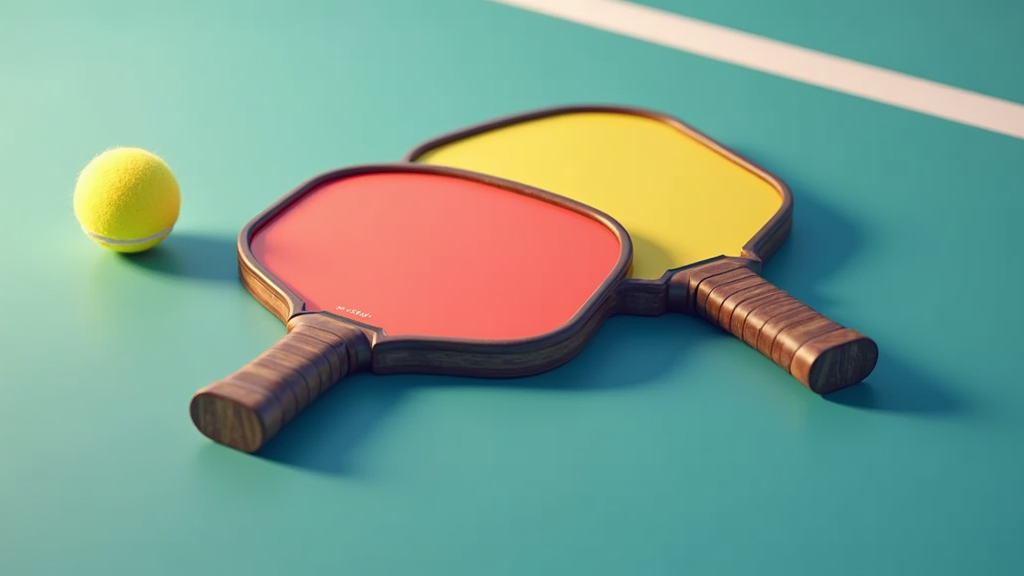
Polymer Core Benefits in Pickleball Paddles
Polymer cores are known for their exceptional control and soft feel, making them a popular choice for pickleball players of all skill levels. These cores are also quite durable and tend to be quieter than other materials, which can be a significant advantage on crowded courts. Polymer cores provide a well-rounded performance, suitable for both beginners and experienced players looking for a balanced game.
Nomex Core Advantages for Power Pickleball Paddles
Nomex cores offer superior power and durability, making them a favorite among intermediate and advanced pickleball players. While Nomex provides excellent pop off the paddle, it’s also known for being louder than other core materials. This core type is ideal for players who prioritize power and can handle a more responsive paddle.
Aluminum Core Benefits for Beginner Pickleball Paddles
Aluminum cores are lightweight and offer good control, making them a great option for beginners. However, they generally provide less power compared to polymer or Nomex cores. Aluminum paddles are a solid starting point for players who are still developing their technique and prefer a lighter feel.
Hybrid Core Customization in Pickleball Paddles
Hybrid core paddles combine different materials to offer a customized performance. This allows players to fine-tune their paddle to match their specific playing style and preferences. Hybrid cores can offer a balance of power, control, and feel, making them a versatile choice for players looking for a unique playing experience.
Choosing the Right Pickleball Paddle Core Materials Outline
Starting with Polymer Core Pickleball Paddles
If you’re unsure which core material to choose, starting with a polymer paddle is generally a safe bet. Polymer cores offer a balanced performance that suits a wide range of playing styles and skill levels. This allows you to develop your game without being overly specialized in one area.
Experimenting with Core Materials as Skills Develop
As your pickleball skills develop, experiment with different core materials to find what works best for you. Trying out paddles with Nomex, aluminum, or hybrid cores can help you discover your preferred balance of power, control, and feel. Consider demoing different paddles before making a purchase to ensure you’re making the right choice.
Matching Core Material to Playing Style and Skill
Ultimately, the best pickleball paddle core material depends on your playing style and skill level. If you’re a power player, a Nomex core might be ideal. If you prioritize control and finesse, a polymer or aluminum core might be a better fit. Consider your strengths and weaknesses on the court when making your decision.

